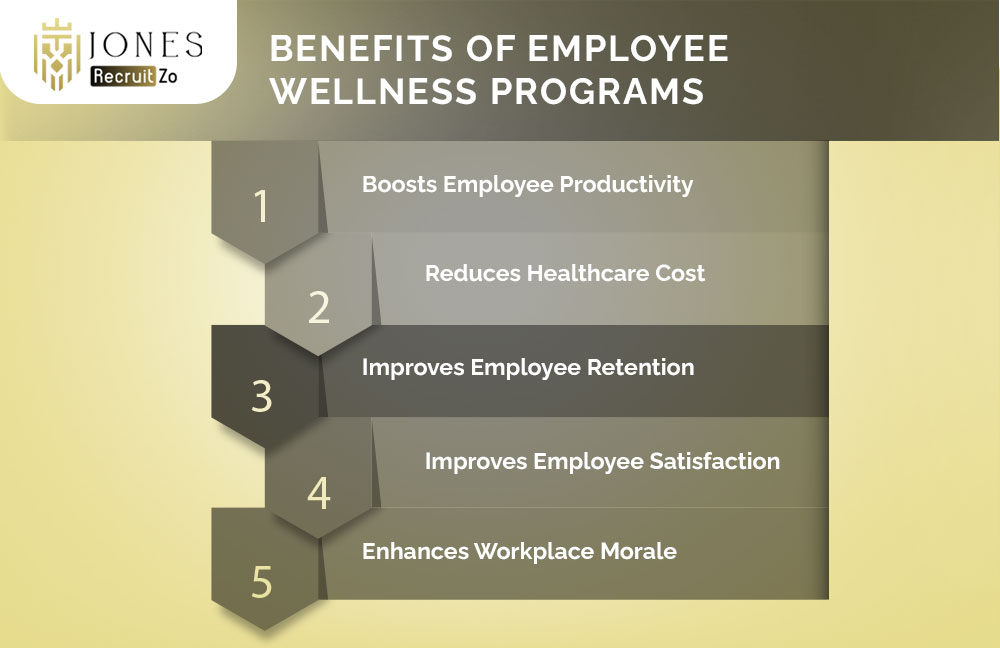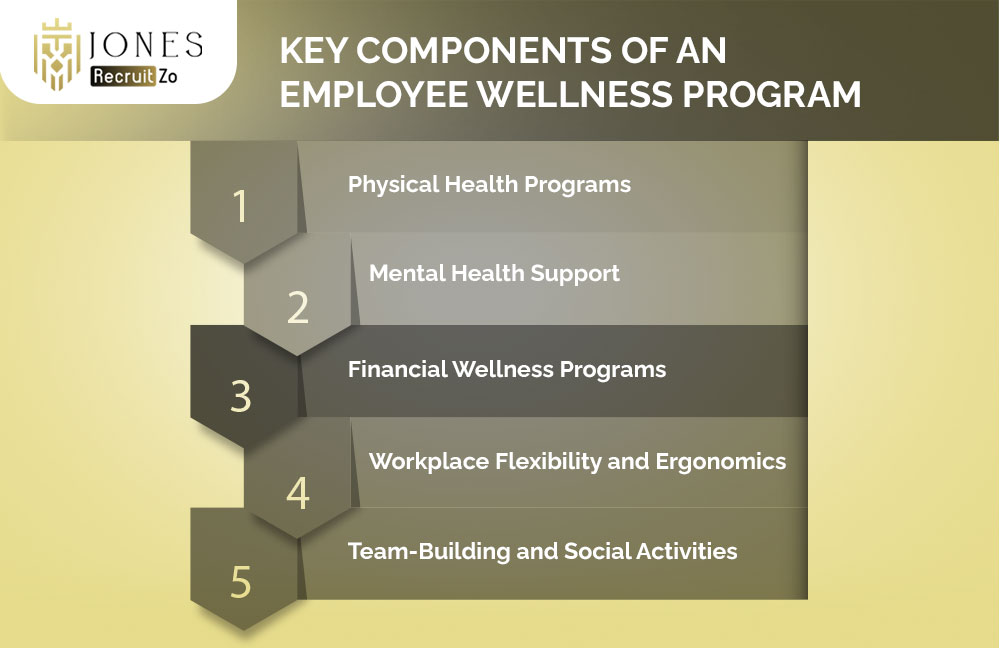What Is An Employee Wellness Programme?
Employee wellness programmes are workplace initiatives designed to improve various aspects of employee well-being – their physical fitness, mental health, emotional health, and sometimes their financial well-being. Employee wellness programmes can include an array of services such as health screenings, fitness programmes, mental health assistance, nutritional support, and work-life balance.
The whole idea behind such programmes is to help the employee live a healthier, more balanced lifestyle, resulting in better productivity, reduced absenteeism, and an improved work culture. The best programmes are well-structured and encompass everything from simple perks such as yoga sessions to modules like wellness coaching that are designed in a way that meets both employee needs and company goals.
Benefits of Employee Wellness Programmes

Implementing a wellness program creates a ripple effect across the organisation, touching everything from productivity to morale and long-term profitability. Here are some of the most notable benefits:
-
Boosts Employee Productivity
Employees are mentally and physically able to exert energy, focus, and motivation in their jobs. Employees who are adequately nourished and rested, as well as supported emotionally, will have less absenteeism and more presence at work; they will contribute more toward great work and innovations at departmental levels.
-
Reduces Healthcare Cost
The instruction of wellness in preventive health care lowers the risk of chronic diseases and costly medical conditions. The wellness programmes discourage employees from costly chronic diseases, thereby improving the long-term overall cost-related healthcare of the company in terms of fewer claims and doctor visit passages. This means savings for both the organisation and its employees.
-
Improves Employee Retention
People want to work for caring employers. Wellness programmes say this loud and clear: “We care about you as a person, not just a worker.” Employees who feel that their employers care about them will be more inclined to stick around, thereby reducing employee turnover and its accompanying recruitment and training costs.
-
Improves Employee Satisfaction
Wellness programmes ensure that employees have a good experience. It compounds hopefulness and morale by validating the company’s commitment to work-life balance, personal development, and health.
-
Enhances Workplace Morale
Those group wellness programmes, social wellness challenges, and shared goals help bring teams together. They encourage team cooperation and stronger bonds among coworkers, which contributes to a healthier general culture for the company.
Key Components of an Employee Wellness Programme

A well-rounded wellness program considers the diverse needs of employees. Each component contributes to the overall health and happiness of your team.
-
Physical Health Programmes
Gym memberships, on-site fitness classes, step challenges, smoking cessation, nutritional guidance, and regular health screenings can be included. These initiatives would help in keeping the employees active and making them choose healthier lifestyles for the prevention of illness and better energy levels.
-
Mental Health Support
Mental health is as valuable as physical health. Some of the important aspects include providing access to therapy or counselling, offering mindfulness or meditation sessions, and training managers to identify burnout symptoms in their employees. Employees that perceive emotional support are likely to handle stress better and display resilience at trying times.
-
Financial Wellness Programmes
Money is one of the most common sources of stress. Financial wellness initiatives such as retirement planning workshops, debt management resources, and personalised financial coaching can assist employees in feeling in control of their finances, thus reducing tension at work and enhancing overall job performance.
-
Workplace Flexibility and Ergonomics
Flexible hours, work from home, and ergonomically friendly workplace environments yield mental and physical comfort. Employees tend to be more productive and committed to the work environment when they have control over their schedules and an accommodating workplace.
-
Team-Building and Social Activities
So we have social well-being. Going for team outings, wellness retreats, lunch-and-learns, or wellness competitions between teams can build great camaraderie among team members and create encouraging collaboration between them.
How to Implement an Effective Employee Wellness Programme?
Introducing a wellness programme is a process that requires thoughtful planning, employee input, and ongoing evaluation. To get it right, companies should take a strategic and inclusive approach.
-
Understand Employee Needs and Interests
Begin with employee surveys or focus groups to gather input. What wellness areas matter most to them? Are they more interested in fitness, mental health, work-life balance, or financial planning? Understanding your employees’ priorities will help shape a relevant and successful programme.
-
Set Clear Goals
An employee wellness programme should be complementary with achieving larger business objectives. If the specific goal was cutting down on absenteeism or strengthening morale or perhaps increasing employee engagement, you will have quantification of goal success and how this relates back to leadership’s ROI.
-
Create a Comprehensive Plan
Design and initiate a structured programme that touches on several dimensions of wellness. Short and long-term strategies, a calendar of activities assigned to initiatives responsible for each, and personal ownership should be included. Finally, make sure the programme accommodates all roles and locations within an organisation.
-
Communicate and Promote the Programme
Not a single wellness programme works in the absence of implementing effective communication. Use emails, posters, internal chat, or company-wide announcements. Regularly remind employees what is available to them, share success stories, and encourage participation.
-
Evaluate the Program’s Effectiveness
Monitor participation status, acquire feedback from employees, track health outcomes, and other related data points. Regular evaluations will inform what works, what does not work, and how to evolve programming to meet changing needs.
FAQs
1) What Is An Employee Wellness Programme?
An employee wellness program is an employer-sponsored initiative that seeks to improve the health and well-being of employees through a variety of programmes, activities, and resources for support.
2) Why is an Employee Wellness Programme Important?
Wellness programmes will contribute to a healthier, more productive, and satisfied workforce; help companies save on health costs; and increase employee engagement and loyalty.
3) What are the steps to implement an employee wellness programme?
The first step in the implementation plan of the programme is an assessment of employees’ needs, to be followed by goal-setting, comprehensive programme design, effective promotion, and regular evaluation of performance improvement.
4) What are the key components of an employee wellness programme?
The most effective programmes tend to focus on some combination of physical health, mental health, financial wellness, flexibility in working conditions, and social opportunities.














